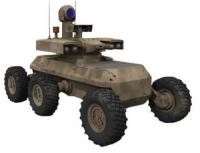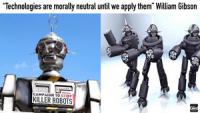-
Making scalable on-chip security pervasive
For the past decade, cybersecurity threats have moved from high in the software stack to progressively lower levels of the computational hierarchy, working their way towards the underlying hardware. The rise of the Internet of Things (IoT) has driven the creation of a rapidly growing number of accessible devices and a multitude of complex chip designs needed to enable them. A new DARP program focuses on addressing the economic and technical challenges associated with incorporating scalable defense mechanisms into chip designs.
-
-
U.S. industries turn to feds for help in economic race with China
In the U.S. economic battle with China, the Chinese government is often portrayed as a kingmaker, making large investments in research and paving the way for Chinese companies to thrive. China, it turns out, is a good foil for U.S. industries as they ask the U.S. government to do more to help them compete globally.
-
-
If we want students to feel safe at school, we can’t encourage teachers to spot potential extremists
Governments have been reaching into schools to try to nip violent extremism in the bud for some time. The Obama administration announced a Countering Violent Extremism (CVE) program in 2014. Programs like these have also been introduced without adequate evidence for their effectiveness. Delivering a program that hasn’t been properly evaluated could make the underlying issues worse. It could ultimately increase youth vulnerabilities (rather than resilience) to radicalization, and other antisocial behaviors.
-
-
Polymers help minimize fuel explosions and fires from accidents and terrorist acts
When an act of terrorism or a vehicle or industrial accident ignites fuel, the resulting fire or explosion can be devastating. On Tuesday, scientists described how lengthy but microscopic chains of polymers could be added to fuel to significantly reduce the damage from these terrifying incidents without impacting performance.
-
-
Turning incident scenes into virtual 3D models
When officers arrive at a crime or crash scene, they have to spend a lot of time looking for evidence, processing it, taking photos of it, and documenting. To help make this process more efficient, the Department of Homeland Security’s (DHS) Science and Technology Directorate (S&T) has teamed up with the Israeli Police to invest in a new tool.
-
-
For a flooded Midwest, climate forecasts offer little comfort
Floods are triggered by extreme rainfall events, often combined with ground conditions, such as saturated or frozen ground, that make it harder for water to percolate down into soil, which increases runoff. Global warming has the potential to intensify the Earth’s water cycle, which will alter the quantity, frequency, intensity and duration of rain and snowfall. As my research and work by others has shown, all of these changes raise the risk of floods for Midwest states.
-
-
A billion more people will be exposed to diseases as world temperatures rise
As many as a billion people could be newly exposed to disease-carrying mosquitoes by the end of the century because of global warming, says a new study that examines temperature changes on a monthly basis across the world.
-
-
Killer robots already exist, and they’ve been here a very long time

The question is not so much whether we should use autonomous weapon systems in battle – we already use them, and they take many forms. Rather, we should focus on how we use them, why we use them, and what form – if any – human intervention should take.
-
-
Israel’s Carbyne, RapidSOS partner to improve 911 calls
Dialing 911 in an emergency is something that we’ve all been instructed to do since childhood. And old-fashioned, simple dialing is what most of us are still doing, even in an age of far more sophisticated technology. Next-gen public safety tech company will provide call takers with more informative real-time data to help first responders locate and treat callers.
-
-
Few pathways to an acceptable climate future without immediate action: Study
A new comprehensive study of climate change has painted over 5 million pictures of humanity’s potential future, and few foretell an Earth that has not severely warmed. But with immediate action and some luck, there are pathways to a tolerable climate future, scientists say.
-
-
Chances of UN banning killer robots looking increasingly remote

The Campaign to Stop Killer Robots warns chances of achieving a U.N. treaty banning the development, production and use of fully autonomous lethal weapons, also known as killer robots, are looking increasingly remote. Experts from some 80 countries are attending a weeklong meeting to discuss the prospect of negotiating an international treaty.
-
-
Detecting radioactive material remotely
Physicists have developed a powerful new method to detect radioactive material. By using an infrared laser beam to induce a phenomenon known as an electron avalanche breakdown near the material, the new technique is able to detect shielded material from a distance. The method improves upon current technologies that require close proximity to the radioactive material.
-
-
Historic, widespread flooding to continue through May
Nearly two-thirds of the Lower 48 states face an elevated risk for flooding through May, with the potential for major or moderate flooding in 25 states, according to NOAA’s U.S. Spring Outlook issued today. The majority of the country is favored to experience above-average precipitation this spring, increasing the flood risk.
-
-
Rapidly melting tall ice-cliffs may trigger faster sea-level rise
Glaciers that drain ice sheets such as Antarctica or Greenland often flow into the ocean, ending in near-vertical cliffs. As the glacier flows into the sea, chunks of the ice break off in calving events. Although much calving occurs when the ocean melts the front of the ice, and ice cliff above falls down, a new study presents another method of calving: slumping. And this process could break off much larger chunks of ice at a quicker rate.
-
-
Dunford: Google’s work with China “challenges” U.S. military advantage

The top U.S. military officer has called out U.S. technology giant Google for its artificial intelligence venture in China, saying it “creates a challenge” in maintaining a U.S. military advantage over the Chinese.
-
More headlines
The long view
The Future of Open Data in the Age of AI: Safeguarding Public Assets Amid Growing Private Sector Demands
AI offers immense potential, but that potential must be realized within a framework that protects the public’s right to its own information. The open data movement must evolve to meet this new challenge—not retreat from it.
Horses for Courses: Where Quantum Computing Is, and Isn’t, the Answer
Despite the impressive and undeniable strides quantum computing has made in recent years, it’s important to remain cautious about sweeping claims regarding its transformative potential.
Federal R&D Funding Boosts Productivity for the Whole Economy − Making Big Cuts to Such Government Spending Unwise
Large cuts to government-funded research and development can endanger American innovation – and the vital productivity gains it supports. If the government were to abandon its long-standing practice of investing in R&D, it would significantly slow the pace of U.S. innovation and economic growth.
Why Ukraine’s AI Drones Aren’t a Breakthrough Yet
Machine vision, a form of AI, allows drones to identify and strike targets autonomously. The drones can’t be jammed, and they don’t need continuous monitoring by operators. Despite early hopes, the technology has not yet become a game-changing feature of Ukraine’s battlefield drones. But its time will come.
New Tech Will Make Our Airplanes Safer
Odysight.ai’s technology allows for constant monitoring of aircraft, sending alerts in case of malfunctions that could lead to accidents.
New Technology is Keeping the Skies Safe
DHS S&T Baggage, Cargo, and People Screening (BCP) Program develops state-of-the-art screening solutions to help secure airspace, communities, and borders
